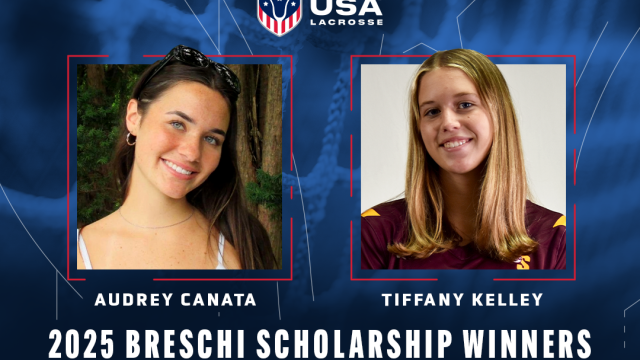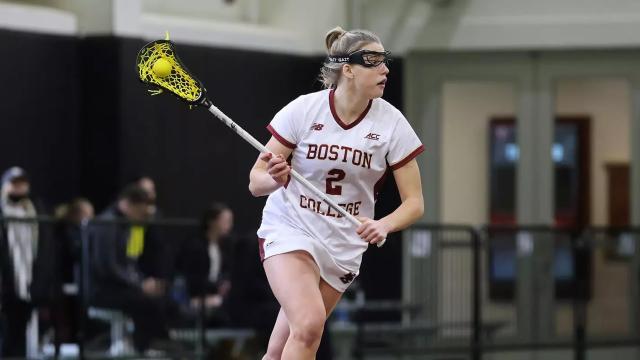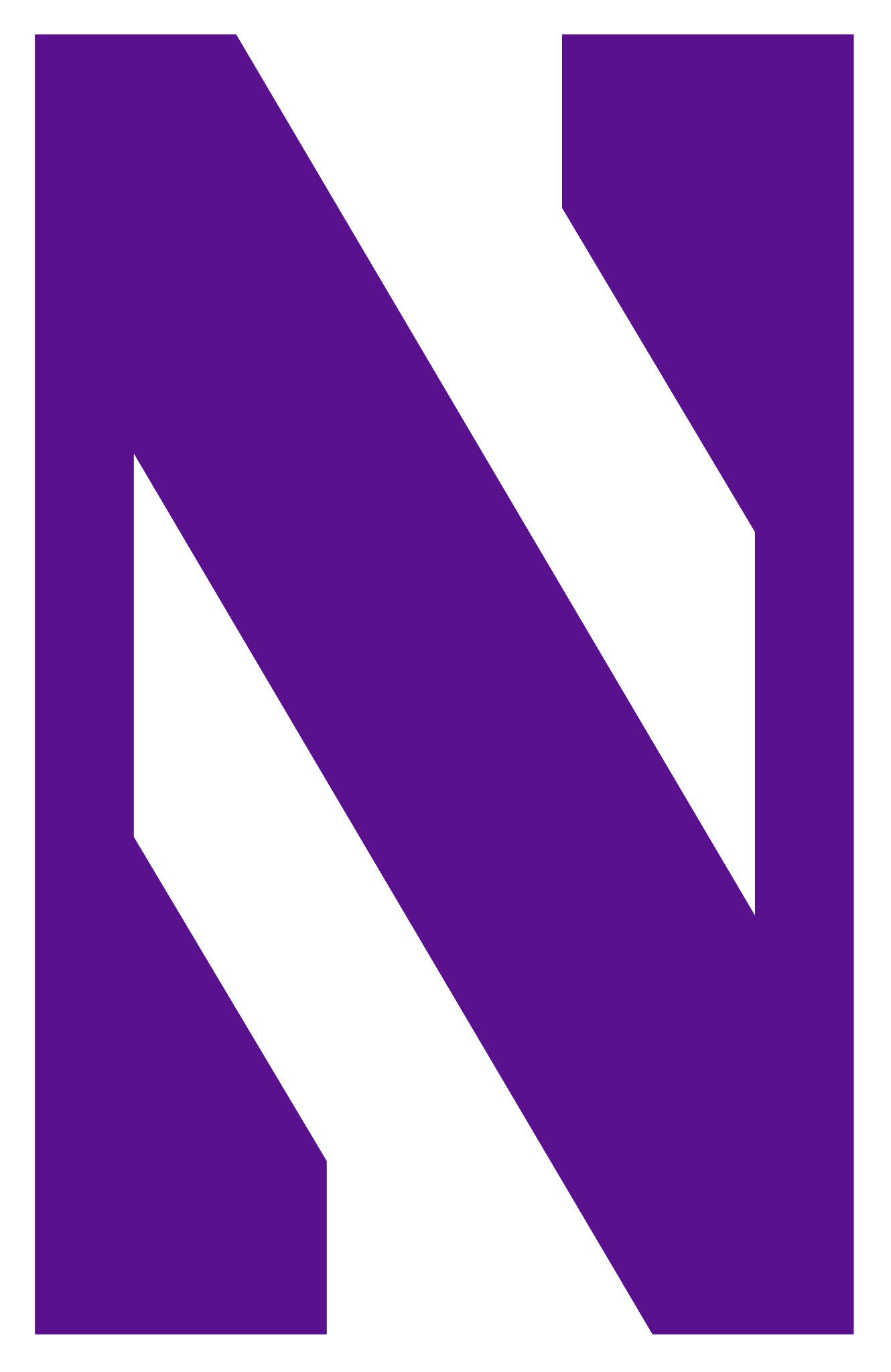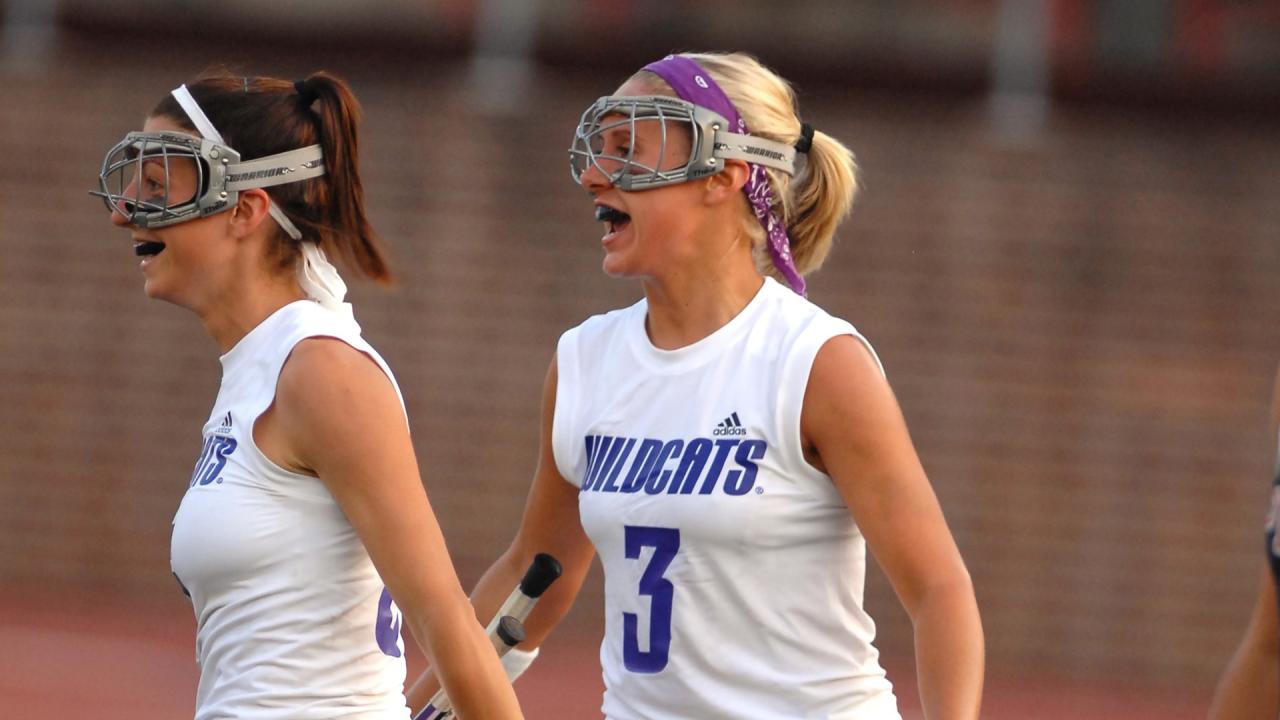
Kristen Kjellman and the Advent of a Women's Lacrosse Dynasty
It’s easy to think of Northwestern as a perennial power — and to be fair, many of today’s Division I players were born in 2002 when the program relaunched under Kelly Amonte Hiller.
But that’s not how the story goes.
Fueled by a team of believers, including National Lacrosse Hall of Fame inductee Kristen Kjellman Marshall, Northwestern went from a disbanded varsity program playing club lacrosse to a dynasty that redefined the women’s game.
Kjellman Marshall and seven other greats will be enshrined as the Class of 2024 at the annual National Lacrosse Hall of Fame Induction Celebration at the Renaissance Baltimore Harborplace Hotel on Saturday. Reserve your tickets here.
KJELLMAN'S NAME AND CAREER HIGHLIGHTS are etched in wood on a plaque that soon will hang in the Richard M. Moran Gallery at the National Lacrosse Hall of Fame and Museum. The woman named the NCAA championship's most outstanding player in 2005, the year Northwestern became the first (and to this day, only) team from outside of the Eastern Time Zone to win a Division I crown, is now the first member of the storied Wildcat dynasty to become enshrined in Sparks, Md.
It fits that her name is etched in something. For nearly a decade, you could pretty much etch Northwestern in stone as the Division I national champion when filling out a bracket, even in February. The Wildcats’ historic tear included seven crowns in eight years from 2005-12.
Northwestern was so dominant that making the NCAA tournament, but bowing out before the final four from 2015-19, drew questions. And even three-straight semifinal losses in 2019, 2021 and 2022 garnered some, “Not your grandmother’s Wildcats” comments. (Or, given the short history, perhaps, “Not your cooler older cousin’s Wildcats,” is more accurate.)
Izzy Scane, Erin Coyendall and company broke the hex in 2023.
Scane and Coykendall spent their entire careers playing games in either Ryan Fieldhouse or the Lanny and Sharon Martin Stadium. The latter has vistas of Lake Michigan that would make a resort mogul swoon. The stadium got an upgrade to include a new turf field, lighting and video equipment in March 2016. Future Wildcats will enjoy a recently renovated and renamed Northwestern Medicine Field at Martin Stadium that includes luxury boxes, 12,000 bleachers and more views of the Lake and Windy City skyline.
Angela McMahon-Serpone was a member of Amonte Hiller’s first Wildcats team in 2002. She remembers a much different landscape.
“We had no locker room,” McMahon-Serpone said. “We changed at our houses or rooms. We didn’t have an actual field. We got put on the club rec fields for practices all fall. Sometimes, there were no lines. Oftentimes, softballs were getting thrown into the middle of practices. Students weren’t willing to move because they didn’t even know if we were a legitimate team.”
They’d find out soon enough, but not overnight, as Northwestern’s rise to prominence often gets billed as two decades and eight national championships later.
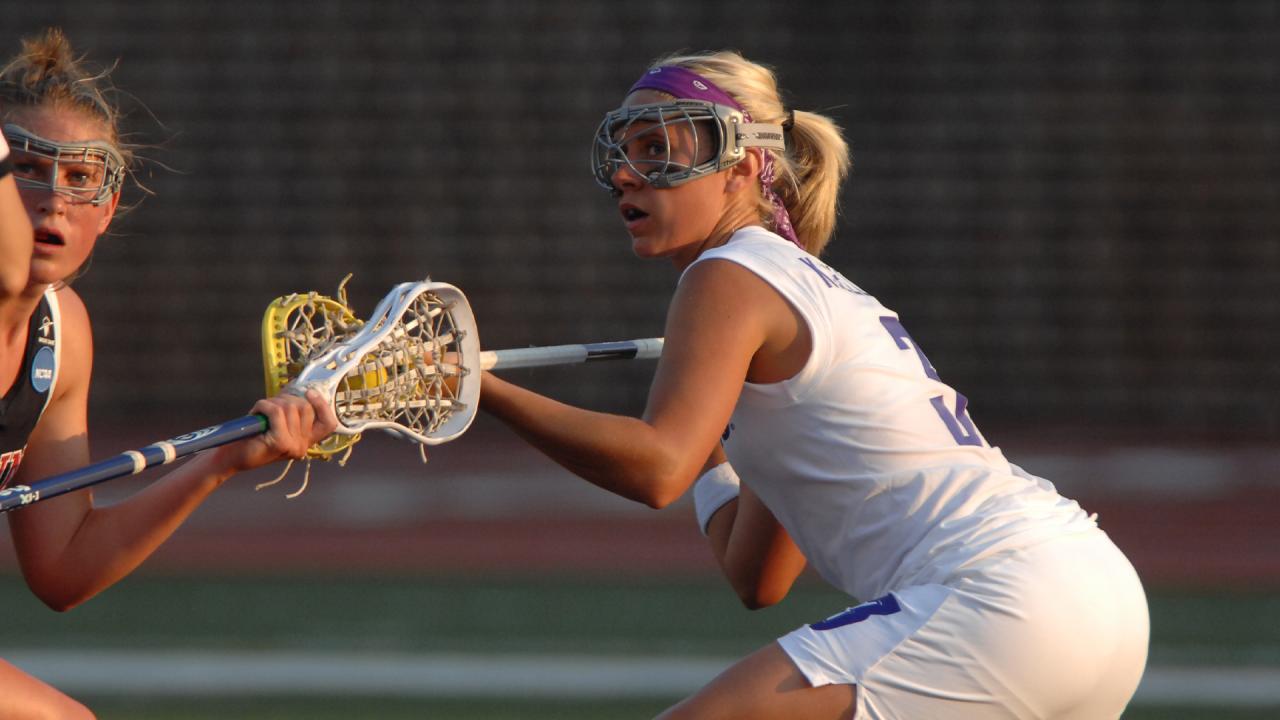
At the time, McMahon-Serpone had just transferred to Northwestern from a more established UMass program in 2001, right before the Wildcats' first season at the varsity level since 1993. It marked not a passing of the torch but a relighting of one.
Cindy Timchal launched the original Northwestern varsity program in 1982. Timchal coached in Evanston until 1990 before she left to develop Maryland into the only dynasty that can hold a candle to Northwestern’s (with some help from a young Amonte Hiller as a player).
Northwestern went 5-10 the first year and 8-8 the second. In 2004, McMahon-Serpone’s final season, the Wildcats went 15-3, qualified for the NCAA tournament and made a quarterfinal run. It turned heads. So did a budding star — a freshman named Kristen Kjellman with a name that gave public address announcers fits and an ability to finish that would do the same for opponents.
There was significant noise about Northwestern and Kjellman, but not necessarily from Kjellman (pronounced CHELL-man, by the way).
“I don’t think she spoke for her entire freshman year, really,” McMahon-Serpone said.
Perhaps a trip to Potbelly’s, a retro sandwich chain, would’ve gotten her talking. That’s where Amonte Hiller took a young Kjellman, a three-sport standout in basketball, lacrosse and soccer at Westwood (Mass.) High School, and her mother. Amonte Hiller laid her vision for Northwestern out on the table and where she saw Kjellman fitting (TL;DR: all over the field).
“She committed on the spot,” Amonte Hiller said. “She didn’t even ask her mom, and I knew right in that moment that we had something special.”
Perhaps it was the sandwich or the unquestioning belief in Amonte Hiller that became a hallmark of her early teams. Both were good reasons. But the reality?
“It was really the only choice,” Kjellman Marshall said.
It’s hard to believe a Northwestern alum would utter a line now reserved for Tewaaraton Award finalists from top mid-majors like Stony Brook, Loyola and James Madison, but the Wildcats’ rise is a work of nonfiction, not a fairytale. Kjellman fit the Northwestern prototype: she played at least three other sports.
McMahon-Serpone recalls the team — many of whom played hoops in high school — regularly playing pickup basketball games to “get the competitive juices flowing.” As legend would (actually) have it, Courtney Koester, whom Amonte Hiller discovered when she was training for a marathon with Koester's twin sister, Ashley, initially walked onto the basketball team.
But those games didn’t get in the way of Kjellman’s drive for greatness and to fulfill Amonte Hiller’s promise to turn Northwestern into a national champion in lacrosse.
But that’s one thing about the Northwestern teams. Despite all the hard work, effort and success, those early players were hailed as “athletes” more than lacrosse players. The label wasn’t locker room fodder for those teams. The collective’s motivation came from within, though they didn’t consider themselves “just athletes.”
“Beyond just getting athletes, Kelly got a group of people that were competitive and just wanted to work hard,” said Ann Elliott Whidden, who won six rings as a Northwestern player and coach and is now the head coach at Colorado. “A lot of us shared this mindset of winning and competing at the highest level, and a little bit of naivety to understand the full picture of what we were doing at the time. We were told we could win, so we went with it.”
It sounds like a tried and trite phrase, especially in today’s 24/7 world of media and social media — where lines like “just want to work hard” get rinsed, washed and repeated. But it’s Northwestern’s truth, a thought shared by former players and champions with nothing left to prove on the field and no recruiting coordinators left to impress.
Exhibit B: “We had no business believing that we were going to win, but we believed everything Kelly said,” said Lindsey Munday, the USC head coach who won five national championships as a Northwestern player and coach. “I don’t think we were necessarily the best or most skilled team at the time. We connected as a group, and it shows the power of belief and connection over skill.”
We connected as a group, and it shows the power of belief and connection over skill.
Lindsey Munday
Munday recalled a special connection with Kjellman. The two, along with the Koester twins, represented Northwestern on the NCAA All-Tournament team in 2005.
“I could just feed her the ball, and she would catch passes that probably weren’t the best thrown and put it in the back of the net,” Munday said.
Kjellman found the back of the net five times in the first half of the 2005 NCAA title game against defending champion Virginia. In the end, the final score read 13-10 Northwestern. The Wildcats went 21-0 that year. And despite all the belief in Amonte Hiller and each other, the celebration was one of quite the opposite.
“That unexpected feeling of winning for the first time is incredible and hard to describe,” Kjellman Marshall said. “I think a lot of us were shocked and surprised, but at the same time, we knew we could be there and knew that we deserved to be there.”
McMahon-Serpone was in the stands. And if you think the people inside the locker room had a tough time wrapping their heads around what just happened, let’s just say the rest of the lacrosse world did a double take even if they witnessed it in person.
“Honestly, in that first year that they won the championship, I don’t even know if people believed until they actually won and had the trophy in hand,” she said. “There’s always this question mark because it really went against the grain of traditional powerhouses, traditional lacrosse, the style of play. Kelly was a super young head coach who recruited a bunch of kids from all over the country.”
Northwestern had arrived, and years two (three, four, five...) proved it wasn’t a fluke to see a team on Central time control the game’s pace from start to finish. Northwestern went 62-2 with three titles in Kjellman’s final three seasons. Yet the pressure to repeat didn’t enter the locker room, nor did the idea they could rest on one laurel. The pressure may have been off, but the intensity was very much on.
Sometimes, even the highly motivated Kjellman recalled wondering, “Kelly, we’re beating teams by 15 goals. Why do we need to do this extra detail?”
History inflates things a bit. Northwestern beat teams by an average of around eight goals per game in 2006 and more than 10 goals per game in 2007, still the largest scoring margin in Division I. But the difference was more than goals.
“When I looked back, I realized it was those details that separated us,” Kjellman Marshall said.
Games weren’t always made-for-TV competitive, but practices were.
“Practices were intense, but the coaches also knew when to mix in some fun,” said Kjellman Marshall, who recalled laughing during late-night shoot-arounds with assistant coach Scott Hiller, Kelly's husband. “Overall, the focus was on hard work. I played both ends but mainly focused on offense. Every day, I’d go up against Christy Finch, the Koesters, Lindsay Finocchiaro, and it made me that much better.”
Better? Or the best? Kjellman became the first player to win consecutive Tewaaraton Awards (2006, 2007), a feat recently repeated by Scane. A feat that means more to Kjellman Marshall 20 years later and with 20/20 hindsight.
“When I won the awards, it certainly was meaningful, and I was humbled,” she said. “But years later, when I reflect, it does mean that much more — just knowing that it’s a hard thing to win. There are so many great players who have come up and received the award, who I’m just in awe of and impressed by.”
Winning a national championship is also challenging. Northwestern made it look easy until it didn’t, entering an 11-year drought that felt like a long, cold Windy City winter. But only one team has repeated since Northwestern won in 2011 and 2012 — Maryland in 2014 and 2015.
North Carolina, James Madison and Boston College have also collected their first national crowns in the last decade — a testament more to the sport’s growth than unfair talks of a decline at Northwestern.
Other programs also went from club ranks to prominence. Florida went from club to varsity in 2010 and made the final four in 2012. But the Gators didn’t get back there until 2024, and a national title still eludes them.
Many Northwestern alums have gone on to start programs out west, including Munday at USC, Elliott Whidden at Colorado and Hannah Nielsen at Michigan. All have seen success. None have broken through and become the second program outside the Eastern Time Zone to win it all.
“Florida’s done a great job. Lindsey at USC has done a great job competing early,” Elliott Whidden said. “Hannah Nielsen has been doing great at Michigan. So many programs have grown but still haven’t gotten there, and it puts into perspective what occurred. It’s amazing to see what Kelly was able to do, getting a group of people to believe in the same thing at the right time in history and get it done.”
“It might not happen again in terms of that sustained success for well over 20 years,” McMahon-Serpone said.
The landscape has changed beyond facilities with views and state-of-the-art video equipment. A USA Lacrosse report in 2020 found that the sport was the fastest-growing at the youth level, with participation surging 32 percent between 2008-18. Women’s Division I participation increased 97 percent in that time.
There are more teams, a deeper pool of players and new hotbeds. It’s no longer strange to see players from various states, including newer hotbeds like Florida and Colorado, on a roster.
There’s more competition and fewer opportunities for dynasties. That’s not a bad thing. There are also more opportunities for players, including under-the-radar types, to make a Division I roster than Kjellman had in the early aughts.
It would be as naive as a 2005 Wildcat to say Northwestern is solely responsible for the interest in women’s lacrosse. In recent years, Kayla Treanor, Michelle Tumolo, Taylor Cummings, Charlotte North and Scane have inspired legions of young fans to go down YouTube rabbit holes and then out in the backyard to replicate their signature moves.
But it would be equally naive to forgo giving credit where it’s due.
“Those teams have contributed,” Elliott Whidden said. “I think there’s been a lot of coaches that have been pushing this sport forward over the years, and Kelly’s one of them. She has a big-picture mindset. Cindy Timchal has also been pushing the sport forward. My hope is that people remember those Northwestern teams as a piece of growing lacrosse.”
Amonte Hiller considers Kjellman a piece of it.
“She’s long past her playing days, and I run across people all the time that absolutely know her career and look up to her,” Amonte Hiller said. “She just continues to inspire with the way that she carries herself.”
And now, she has a piece of Hall of Fame real estate, too.
Paul Ohanian contributed to this article.
Beth Ann Mayer
Beth Ann Mayer is a Long Island-based writer. She joined USA Lacrosse in 2022 after freelancing for Inside Lacrosse for five years. She first began covering the game as a student at Syracuse. When she's not writing, you can find her wrangling her husband, two children and surplus of pets.

Related Articles

